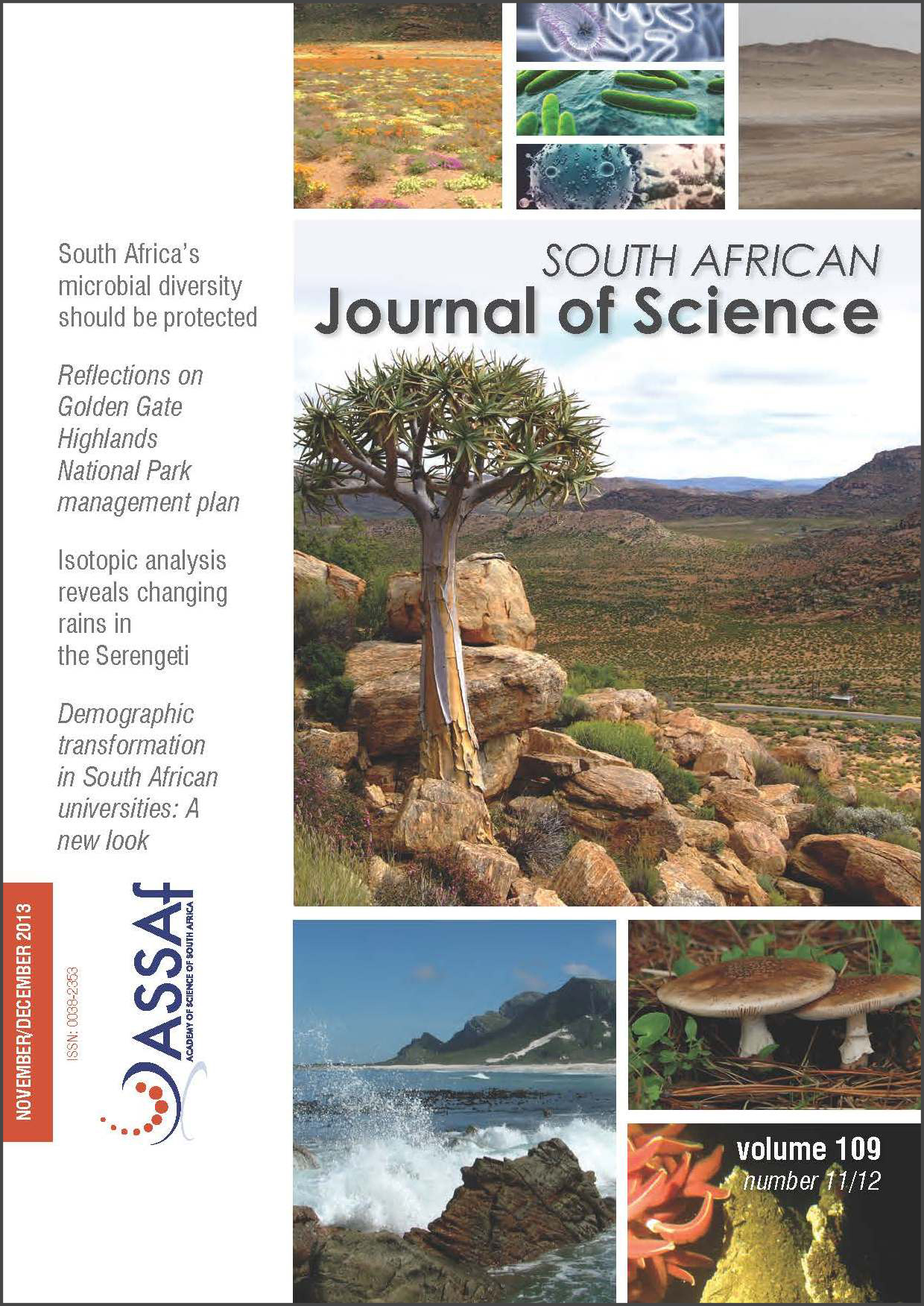A review of Kudoa-induced myoliquefaction of marine fish species in South Africa and other countries
DOI:
https://doi.org/10.1590/sajs.2013/20120003Keywords:
myoliquefaction, marine fish species, myxosporean parasite, Kudoa infection, proteolytic enzyme, detection methodsAbstract
Myoliquefaction of fish musculature results in customer quality complaints and in huge economic losses, especially with regard to Pacific hake (Merluccius productus), farm-reared Atlantic salmon (Salmo salar), South African pilchards (Sardinops ocellatus) and Cape snoek (Thyrsites atun). Myoliquefaction, or ‘jelly flesh’, is caused by proteolytic enzymes released by the marine myxosporean parasite, Kudoa thyrsites, after the death of the fish. Currently there are no fast methods of detection for this microscopic parasite, and because myoliquefaction is evident only after 38–56 h post-mortem, infected fish inevitably reach the processor and/or consumer. Several methods of detection have been investigated, but most of these methods are time-consuming and/or result in destruction of the fish, and are thus impractical for fishing vessels and fish processors. Limited research is available on possible means of destroying or inhibiting the post-mortem activity of the parasitic proteolytic enzyme. Means such as manipulating post-mortem pH and temperature control have been suggested; leaving opportunities for research into food technology applications such as cold-chain management and ionising radiation.
Published
Issue
Section
License

All articles are published under a Creative Commons Attribution 4.0 International Licence
Copyright is retained by the authors. Readers are welcome to reproduce, share and adapt the content without permission provided the source is attributed.
Disclaimer: The publisher and editors accept no responsibility for statements made by the authors
How to Cite
- Abstract 589
- PDF 591
- EPUB 189
- XML 217













.png)